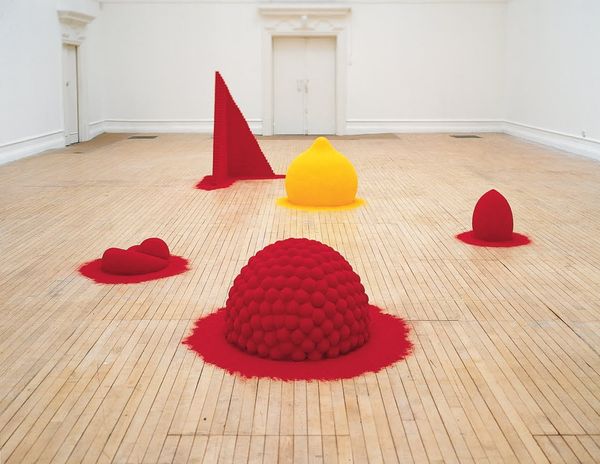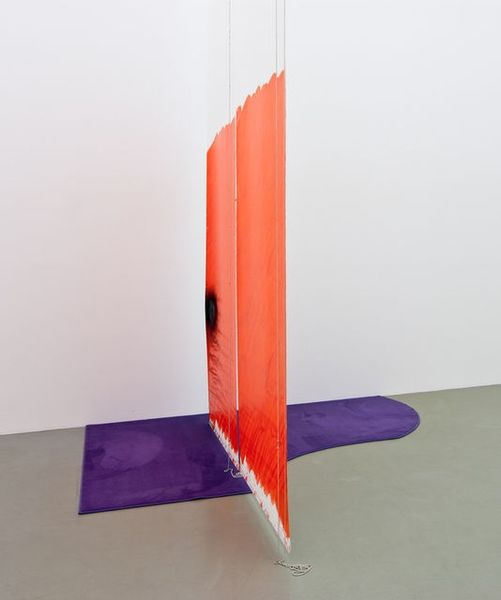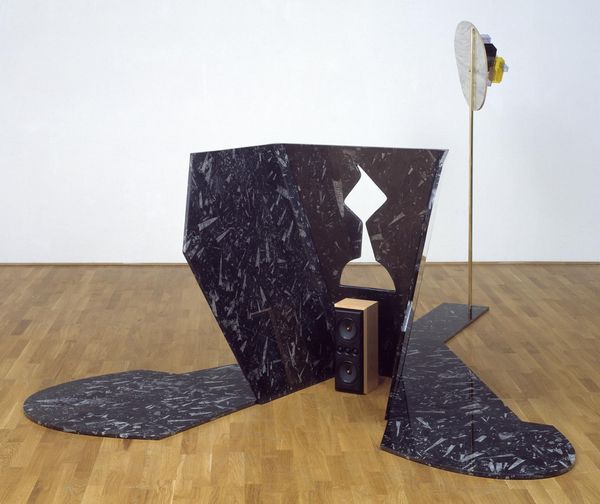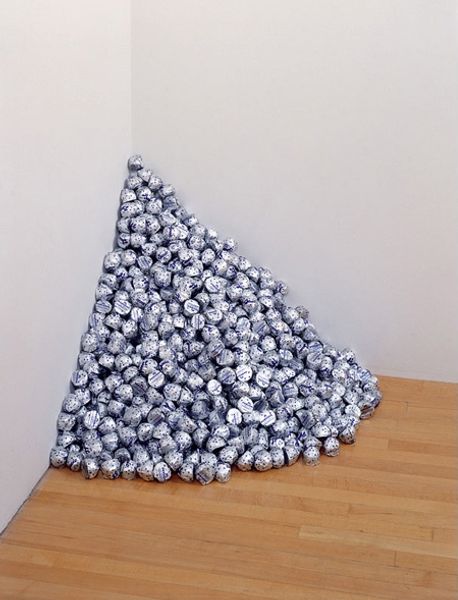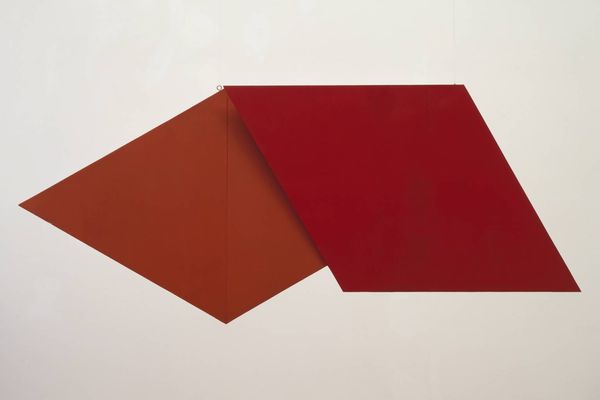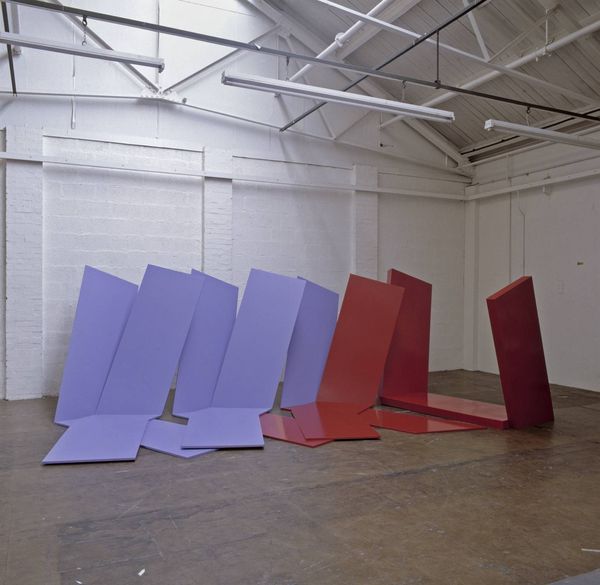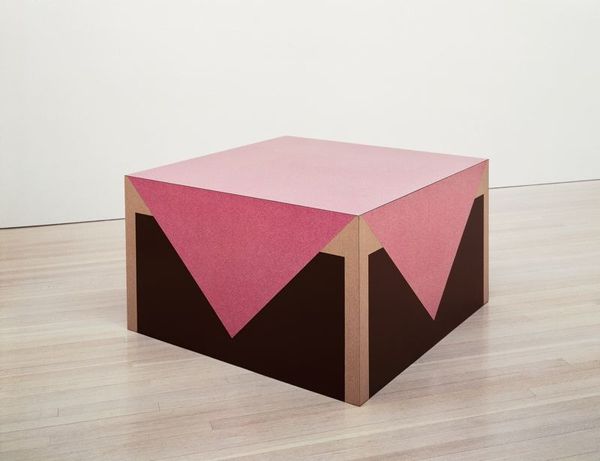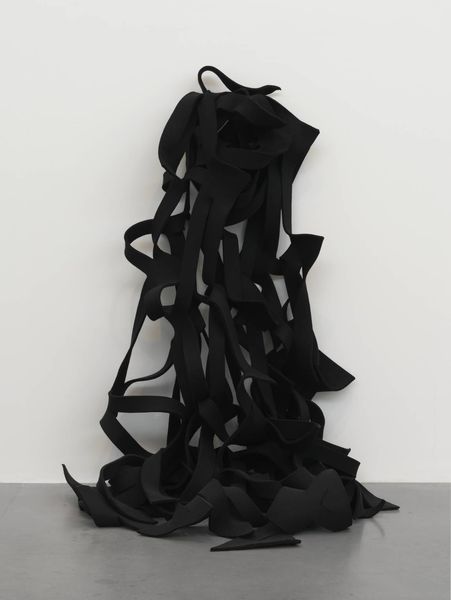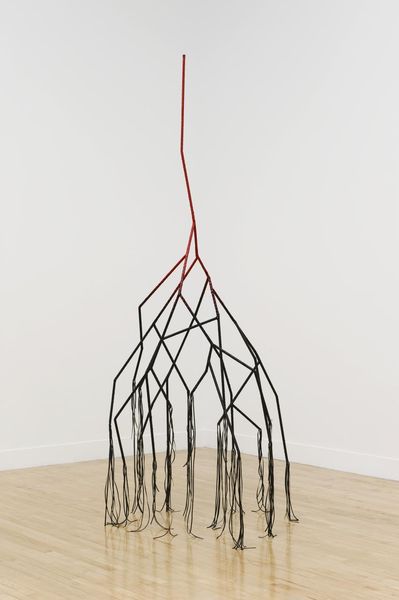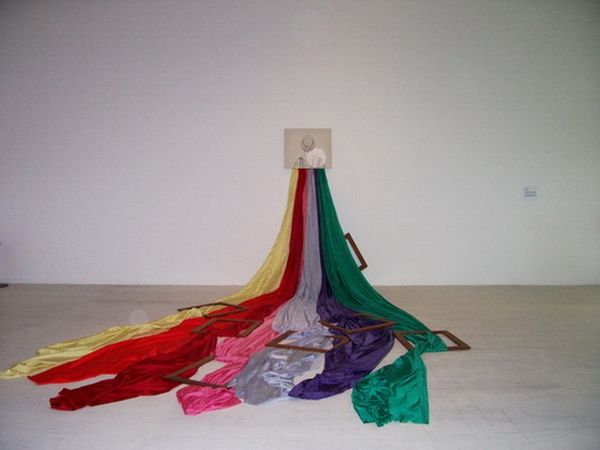
mixed-media, sculpture, installation-art
#
mixed-media
#
organic
#
conceptual-art
#
minimalism
#
geometric
#
sculpture
#
installation-art
Copyright: Anish Kapoor,Fair Use
Curator: Standing before us is Anish Kapoor’s “White sand, Red millet, Many Flowers” created in 1982. It’s an installation piece composed of pigment and mixed media. Quite striking, isn't it? Editor: Strikingly artificial. The shapes are simple – cones and mounds – yet the colors are so saturated, so otherworldly, it feels like a dreamscape on another planet. Or a very stylized miniature landscape. Curator: That sense of otherworldly artifice is deliberate, I believe. Kapoor is playing with the visual language of ritual, echoing sacred topographies, but filtered through a minimalist lens. He takes something elemental – colored pigment – and transforms it into something laden with cultural echoes. Editor: Precisely. Look how the shapes evoke universal symbols. Pyramids in yellow, the Christmas tree shape in black and what look like clouds in a shade of deep dark nothing. These are structures loaded with symbolism yet distilled to their essence. Are we looking at primal memories of childhood holiday traditions, or funereal rituals represented in such a conceptual way? It challenges how we find and apply meaning. Curator: And Kapoor often explores dualities like this. The solidity of the forms contrasts with the ephemerality of the loose pigment. He's juxtaposing the monumental with the transient, drawing attention to our own fleeting presence and how even lasting things can be fragile or even deceiving. These geometric sculptures, bathed in such unnatural light, stand between monument and memory. Editor: This work really points to how the reception of art is not static, but actively shaped by societal frameworks. The choice to display something like pigment sculptures within the white cube of a gallery inherently influences its interpretation. Is this the artist providing spiritual grounds or the institution, the very symbol of the Western Art world, domesticating the "primitive" in it's pristine, perfect, yet empty presentation? Curator: Good question, one that haunts much of contemporary art! Kapoor certainly uses these symbols as keys unlocking cultural codes to be revisited. The symbolic vocabulary he draws upon speaks volumes. Editor: The implications here for visual memory and cultural persistence are complex indeed. It makes you think about how art can function as both a cultural archive and an individual meditation.
Comments
No comments
Be the first to comment and join the conversation on the ultimate creative platform.
